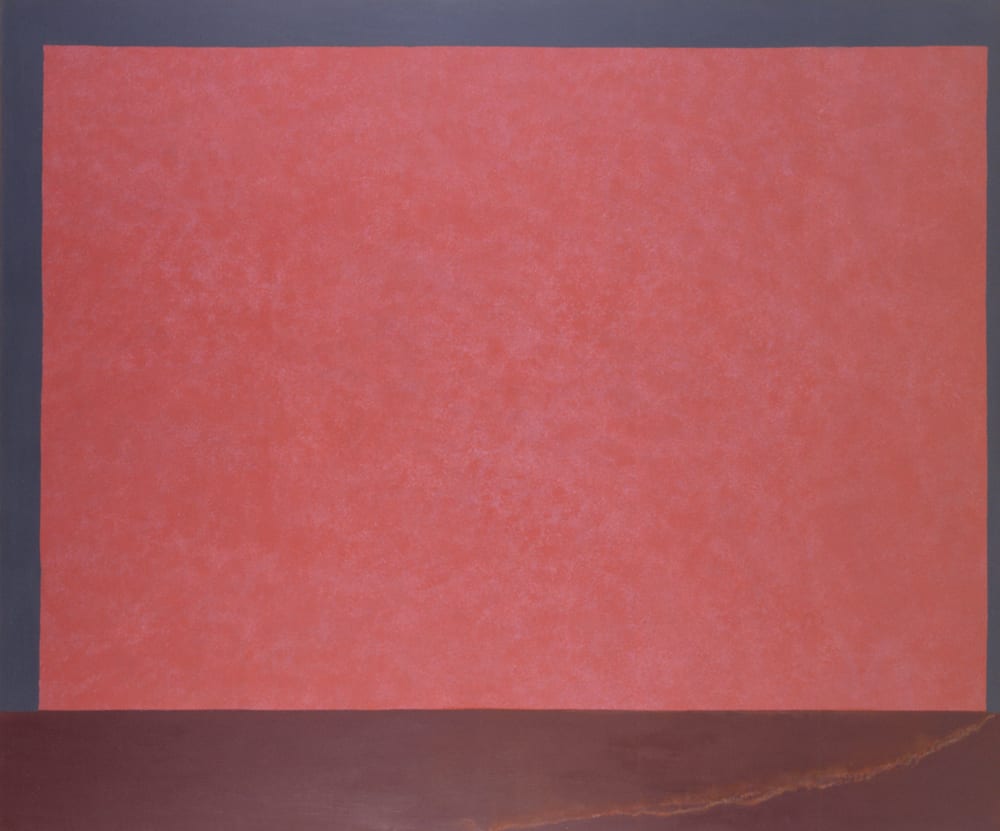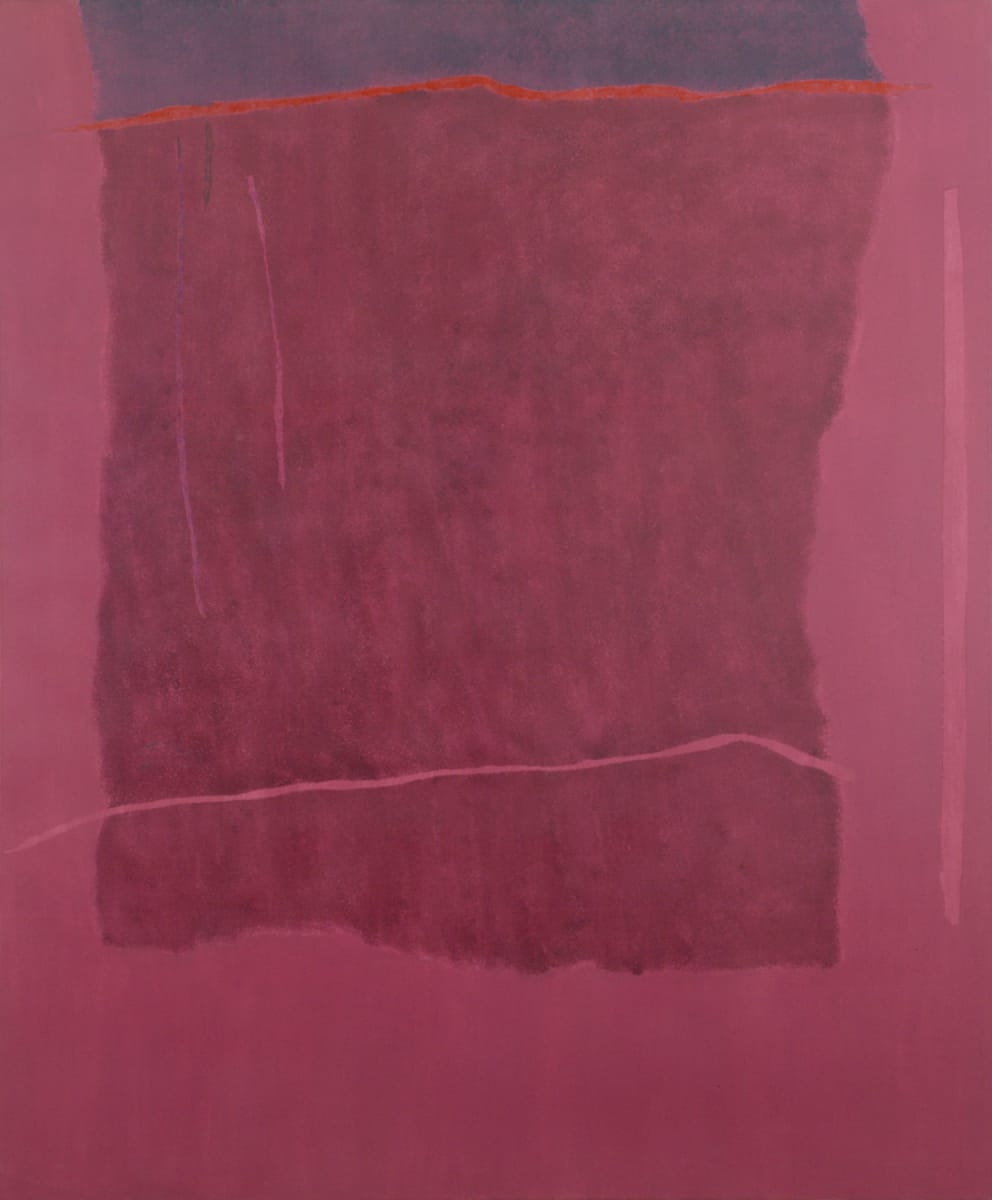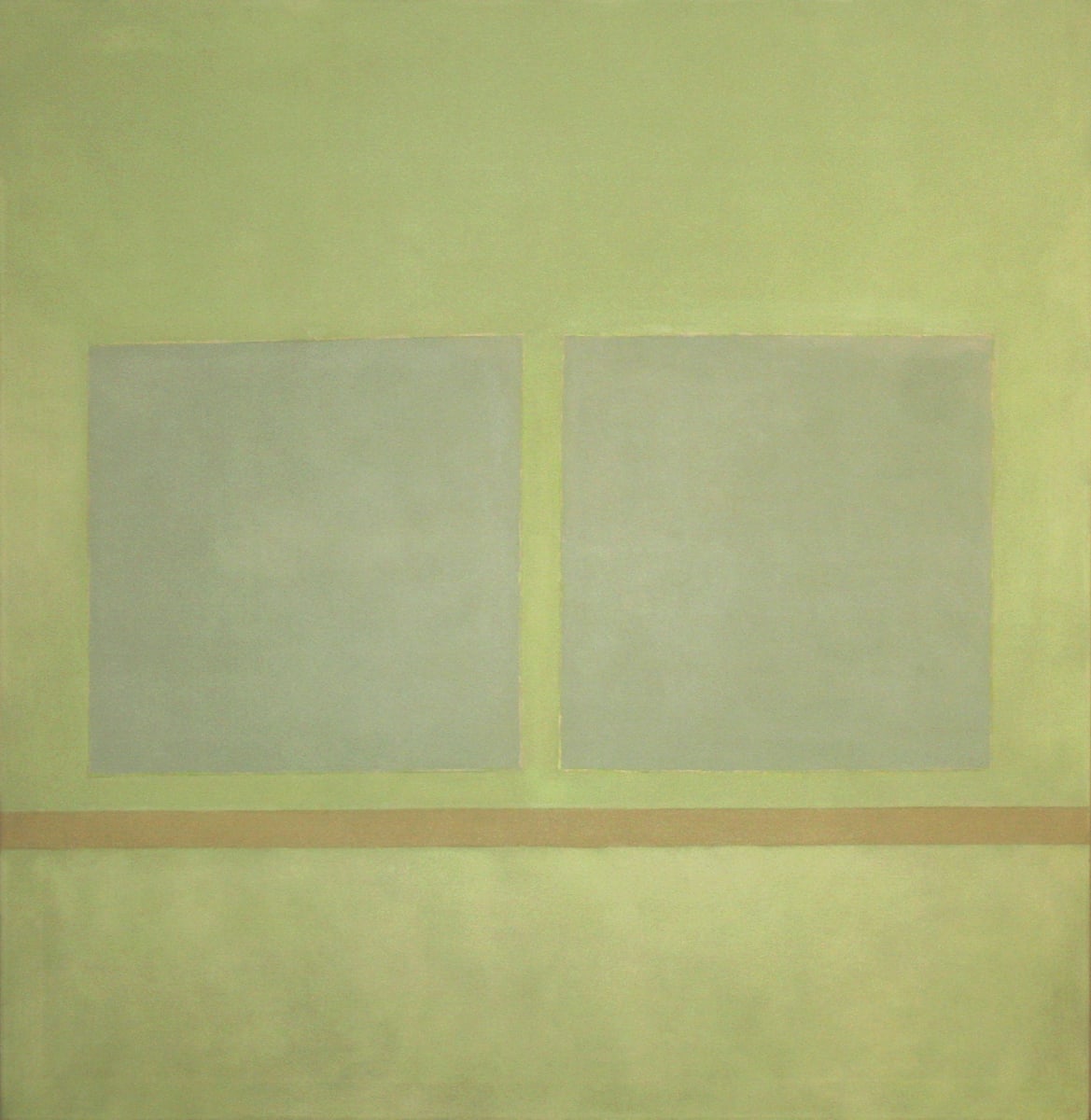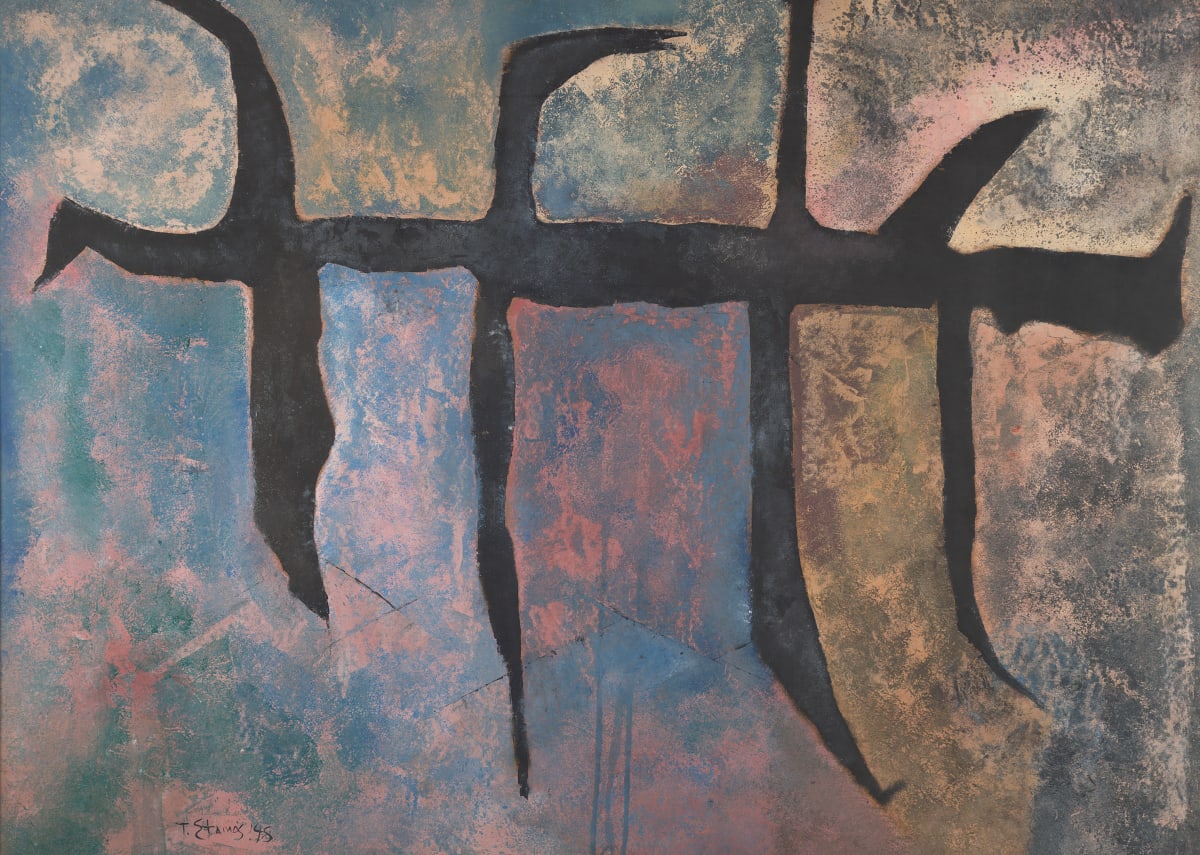
Underpinning the lyricism of Stamos’ paintings are his interests in mythology, botany, and Eastern philosophy.
Hollis Taggart Galleries is pleased to announce Theodoros Stamos: Infinity and Beyond. The youngest member of the “Irascibles,” the vanguard group of American artists memorialized in Nina Leen’s 1950 photograph, Theodoros Stamos was only twenty years old when he received his first one-man show at the Betty Parsons Gallery. He drew early acclaim for his abstracted biomorphic imagery in the 1940s and early 1950s, revealing what his friend and fellow artist Barnett Newman described as a “true communion” with nature. In the late 1950s he began to concentrate on fully abstract painting, first in a set of paintings simply entitled “Fields” in the 1950s, and later in his celebrated Infinity Field series, which is the focus of the present exhibition.
Hollis Taggart Galleries is pleased to announce Theodoros Stamos: Infinity and Beyond. The youngest member of the “Irascibles,” the vanguard group of American artists memorialized in Nina Leen’s 1950 photograph, Theodoros Stamos was only twenty years old when he received his first one-man show at the Betty Parsons Gallery. He drew early acclaim for his abstracted biomorphic imagery in the 1940s and early 1950s, revealing what his friend and fellow artist Barnett Newman described as a “true communion” with nature. In the late 1950s he began to concentrate on fully abstract painting, first in a set of paintings simply entitled “Fields” in the 1950s, and later in his celebrated Infinity Field series, which is the focus of the present exhibition.
Born in 1922 in New York to parents of Greek origin, Stamos, in his last series of works, which he executed from 1970 until his death 1997, turned toward his heritage for inspiration. All of the paintings produced during this period were part of his Infinity Field series, a complex meditation on nature, humanity, and history begun on the Greek island of Lefkada, where Stamos resided at least part time from 1970 onward. Stamos’s father was born in Lefkada, and thus the isle assumed a cherished position for the artist, as a place of refuge and lore. Although resolutely abstract, the compositions evoke elements of the Greek island—its windows and archways, warm breezes, and lapping waters. In this way, the artist was able to channel his deep appreciation of nature into his desire to find universal human themes. As Kenneth Sawyer explained in a 1960 monograph on the artist, “It was in Greece that Stamos recaptured the spirit of the Mysteries, the pantheism of his childhood; it was there, too, in the silver light of the Aegean, that the love for clear, vibrant color was fully awakened. It is amusing to note that subsequently his synonym for whatever was clear, warm, or brilliant was ‘Greek.’”
The first paintings Stamos undertook in Lefkada, such as the rare Infinity Field and Infinity Field, Lefkada, serve as nexus points indicating the directions the artist’s work would take in the three decades that followed. The insistent horizontality of the former mimics the format of landscape paintings, and the subtle line traversing the canvas implies a horizon, a notion to which the painting and series title—Infinity Field—nods. Through the understated modulation of color in the latter work—vibrant persimmon hues—and the suggestion of fields contained within fields through the use of faint “linear couples,” Stamos creates a masterful painting that seems to glow from within, emitting a warm light through its mottled paper surface. The sensitivity to light, meditative atmosphere, and complex treatment of space displayed in these two paintings are hallmarks of the artist’s Infinity Field series.
An early work, Above-Below, from 1961, signals the artist’s preoccupation with rendering space beyond the confines of the two-dimensional pictorial surface. Through the use of color and composition, Stamos creates a sense of the expansiveness of pictorial space; he explained, “my feeling was to create more infinity with color….” He also explored various compositional techniques to suggest layered space, as a rare untitled collage attests.
In establishing a tension between the flatness of the two-dimensional painting and the intimation of unbounded space created by his delicate washes and rectangular color blocks, Stamos’ art represents a major contribution to color field painting. In their often large-scale paintings, color-field painters sought lyrical or atmospheric effects, immersing their viewers in a color environment. In his insistence on maintaining a human scale for his work Stamos’ approach differed from his colleagues, in that his paintings continuously reference the human element even as they reach for the infinite.
Underpinning the lyricism of Stamos’ paintings are his interests in mythology, botany, and Eastern philosophy. Like many of his colleagues, in the years during and following World War II, Stamos began to express a concern with creating universal themes and imagery. He viewed his surroundings as touchstones of the ancestral past, where the rocky shores, white cliffs, and ocean waves were evidence of civilizations of centuries past and stories generations old. His Spartan mother, in particular, had regaled him with Greek lore, which no doubt had sparked his interest in mythological and historic sites. Infinity Field, Nemea #3 (1973), for example, references in its title the home of the Nemean Lion, a great monster which Heracles killed as the first of his twelve labors. Stamos, who had suffered his own public battles, likely took this story of Greek heroism to heart. The later Infinity Field, Lefkada Series (For Niko Xylouris) evokes more recent history in its homage to the great Cretan musician Niko Xylouris.
A painting such as Infinity Field, Lefkada Series from 1981 approximates a landscape seen from above, a topographical map of sorts. The sensuous textures of the central rectangular fields, as in the variegated lavender surface that resembles milky quartz or gemstone, seem themselves to be derived from the earth. Although devoid of specific references, the suggestions of landscape in Stamos’ Infinity Field series should come as no surprise. For Stamos landscape as a genre, as a way of seeing, served as a branching off point for his paintings. He named as influences the “organic aesthetics” of the Hudson River School, the romantic and visionary aspects of Albert Pinkham Ryder, and the landscapes of Winslow Homer, and George Inness.
In his later work, Stamos turns his attention to Christian mysticism, particularly after having visited Jerusalem in 1983. With its titular reference to the shroud of Turin, Infinity Field (Torino Series #1) poses questions about the existence of the miraculous, and man’s faith in the visual; inscribed against the modulated, bruised ground is a symbol of infinity, punctuated by two dots that call to mind the all-seeing eyes of the divine. Fire-red flames bleed into the darker field, denoting a vital spirit embodied by the painting itself. For Stamos, the act of painting represented a dance, a delicate choreography of formal elements arranged to “become charged with the possibility of movement and of life.”
Always deeply sensitive to his surroundings—the clear, bright light of the Greek islands, the harsh glare on Long Island, or the spiritual resonance of Jerusalem—Stamos infused his paintings with a sense of greater purpose, an abiding belief that contained within the visual are the keys to the universals of human existence. His Infinity Field series remains his enduring legacy, a testament to his odysseys in time and space. For an artist’s “highest effort,” as Stamos explained in a 1954 lecture, “was to suggest infinity, the infinity which belongs to the free mind of man.”












